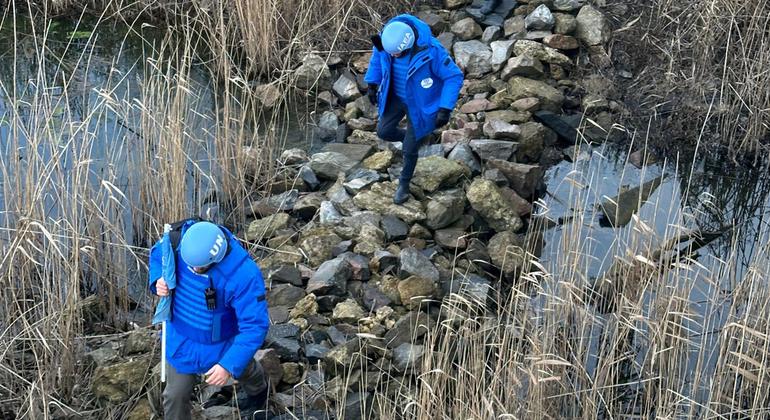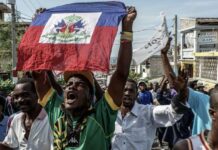Zaporizhzhya Nuclear Power Plant (ZNPP) – which is also Europe’s biggest nuclear energy facility – has been under Russian control since shortly after it launched a full-scale military campaign in February 2022.
In recent days, an IAEA expert team crossed the frontline to replace colleagues at the Zaporizhzhya plant who have been monitoring nuclear safety and security since September 2022. The presence of the “IAEA Support and Assistance Mission” at ZNPP and four other nuclear facilities is meant “to help prevent a radiological accident during the military conflict”, IAEA said in a statement.
“We will stay at these sites for as long as it is needed to help avert the threat of a nuclear accident that could have serious consequences for human health and the environment in Ukraine and beyond,” said IAEA Director General Rafael Grossi. “As the nuclear safety and security situation remains highly challenging, our experts are continuing to play a crucial stabilizing role at all these facilities.”
Media reports indicated ongoing fighting and drone attacks in the vicinity of the Zaporizhyzhya plant in southeastern Ukraine.
Conflict ever-present
“During the past week, the team has continued to hear frequent explosions, some distance away from the ZNPP. No damage to the ZNPP was reported,” IAEA said. The agency’s teams said that the safety and security at four other Khmelnytskyy, Rivne and South Ukraine NPPs and the Chornobyl site reported that safety and security at Ukraine’s four other nuclear plants “is being maintained despite the effects of the ongoing conflict, including air raid alarms for several days over the past week”.
At the Zaporizhzhya plant, IAEA said that it had been informed that two backup transformers had resumed operation after successful high voltage testing, while maintenance would be carried out on the four remaining backup transformers by the end of the year.
The IAEA expert team also reported discussing winter preparations for the plant and receiving confirmation that all six reactors will remain in cold shutdown.
The IAEA expert team also reported discussing winter preparations for the plant and receiving confirmation that all six reactors will remain in cold shutdown.
Humanitarian crisis worsens
Latest updates from UN aid teams have highlighted the deepening humanitarian crisis across Ukraine, particularly in frontline areas in the northeast, east and south, owing to “intensified attacks” by Russian forces. UN human rights monitors have verified more than 1,400 deaths and injuries since the full-scale Russian invasion on 24 February 2022.
“Humanitarian response efforts face growing challenges, including safety risks. “Six aid workers were killed or injured in July and August alone.” said UN aid coordination office, OCHA. It noted that in the first nine months of the year, the humanitarian community has provided at least one form of assistance to 7.2 million out of 8.5 million people targeted for support.
This is despite the 2024 Humanitarian Appeal for Ukraine receiving less than half the requested $3.11 billion.
“Civilians remaining in front-line communities in Donetsk, Kharkiv, Khersons, Dnipropetrovsk and Zaporizhzhya oblasts face dire living conditions, which is expected to worsen as winter approaches,” OCHA warned.
Repeated attacks on energy infrastructure “are expected to worsen the challenges civilians will face in the coming winter”, the UN agency continued, highlighting likely disruption to essential services such as water, gas and heating.
According to authorities and UN partners on the ground, attacks in the early hours of Thursday injured dozens of civilians and damaged apartment buildings and hospitals in the capital, Kyiv, and in the front-line regions of Odesa, Zaporizhzhia, Kharkiv, Kherson, Donetsk, Sumy and Mykolaiv.
Aid workers swiftly mobilised to offer psychological support, provide construction materials and deliver cash assistance to vulnerable people, OCHA reported.
The UN Resident Coordinator Office in Ukraine, Matthias Schmale, who witnessed the humanitarian impact of the attacks firsthand, met with local authorities and humanitarian partners to discuss ways to strengthen the humanitarian response.












